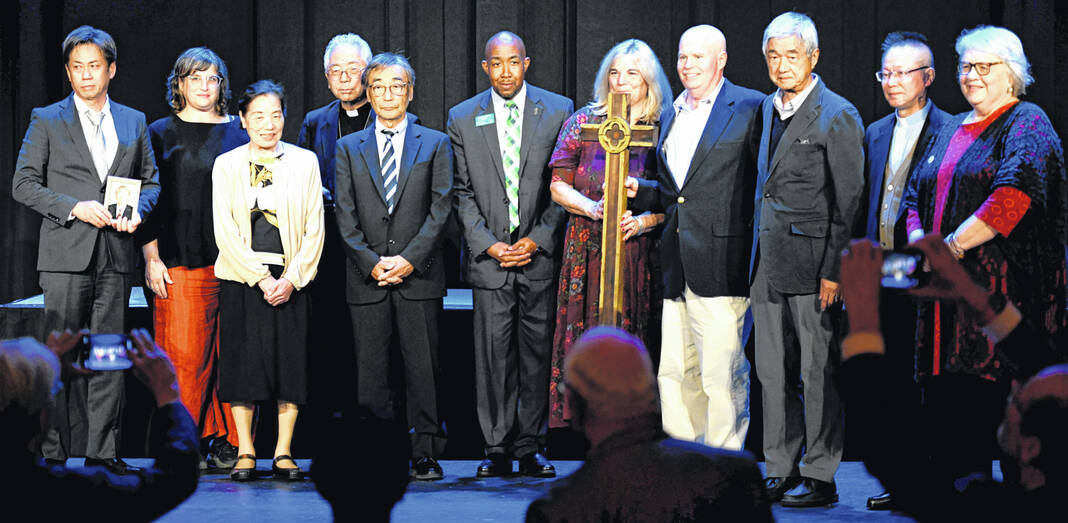
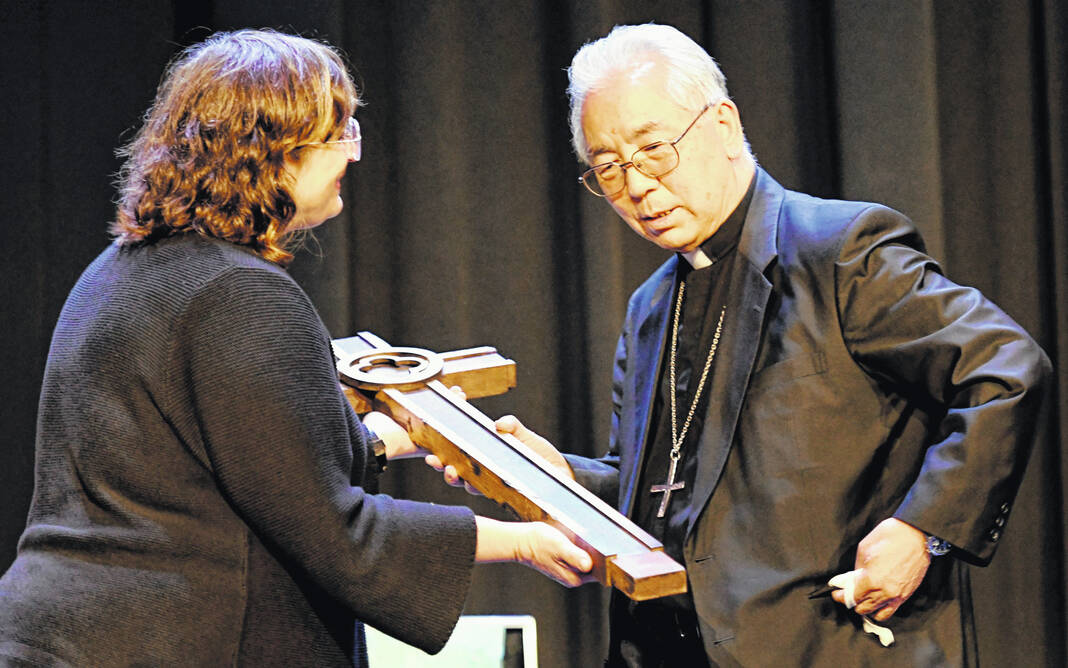
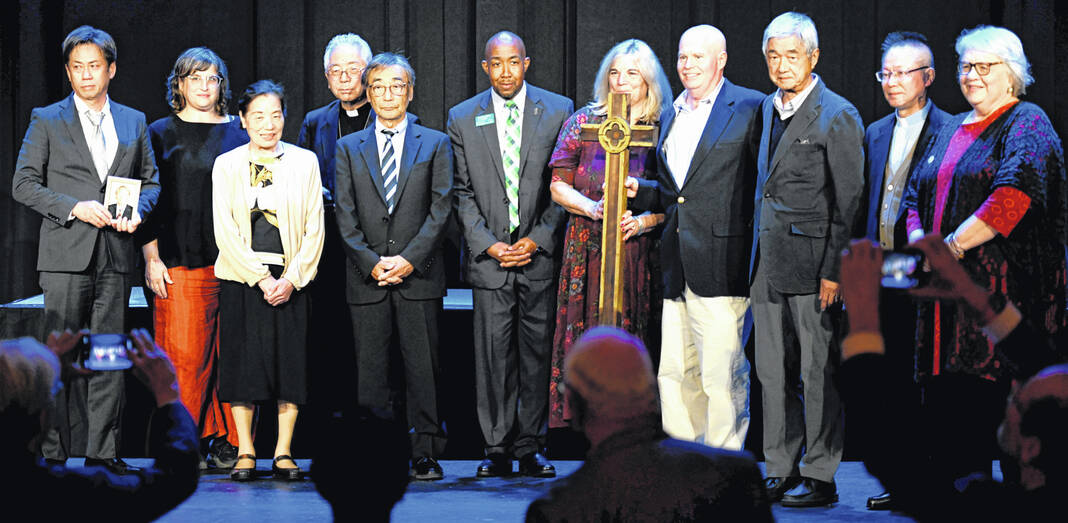
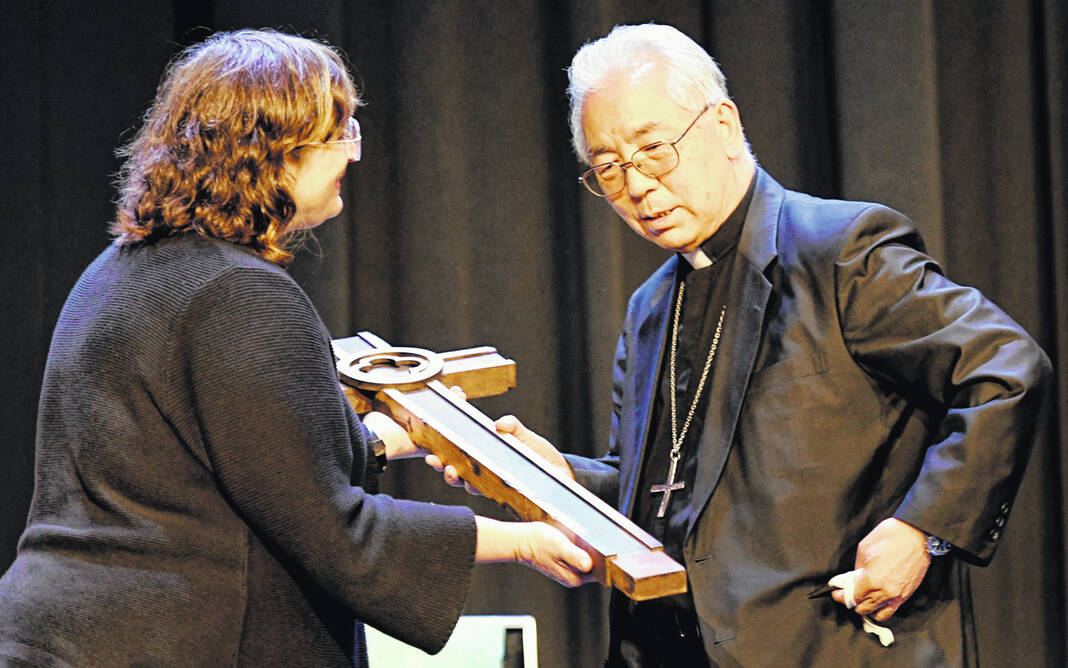
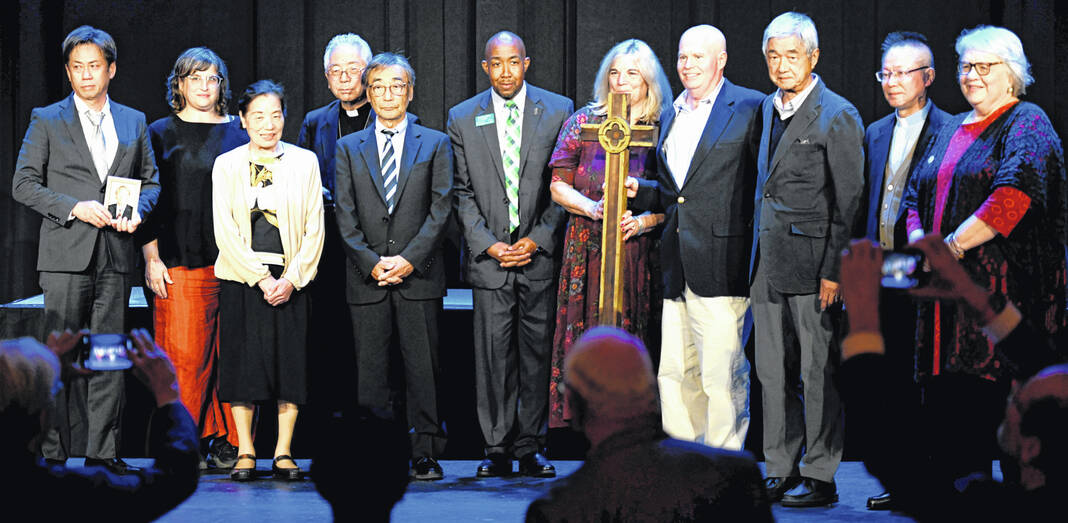
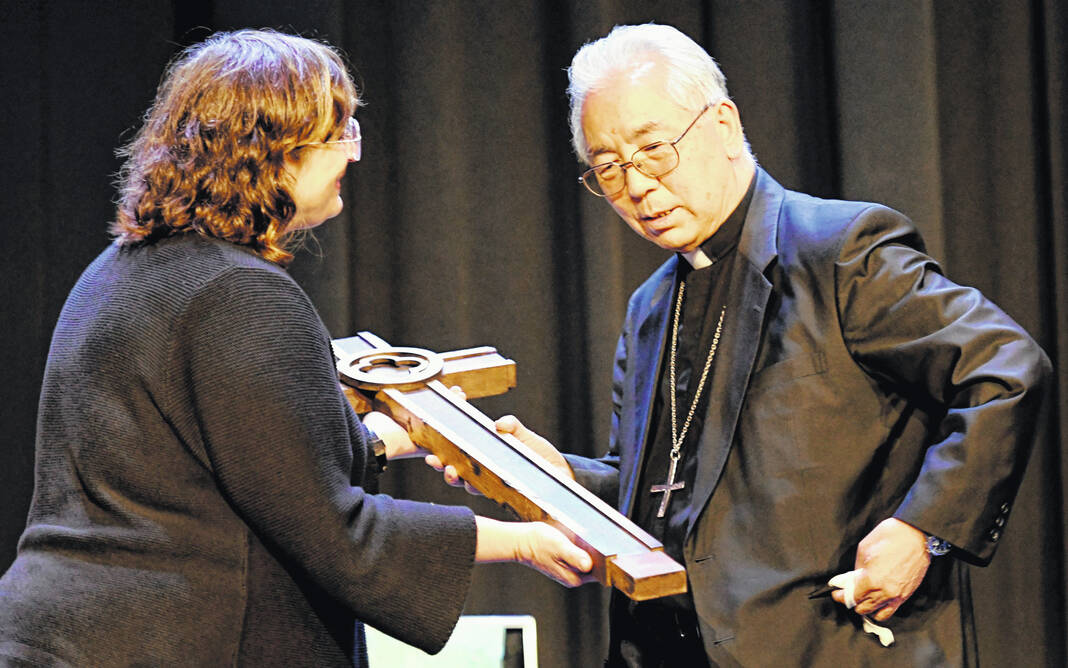
WILMINGTON — Representatives of Wilmington College received an atomic-bombed cathedral cross replica from a delegation of Nagasaki Archdiocese faithful during a “Gifts of Friendship, Gifts of Peace” ceremony Friday in the historical Murphy Theatre.
The event included an exchange of gifts, instrumental and vocal music, readings of letters of greeting, remarks from a man who along with his father made the new matching cross, and reflections from a deaf daughter of a U.S. Marine veteran who remembers having the original damaged cross in their home before he donated it to the college’s Peace Resource Center.
Three years ago, the WC Peace Resource Center director, the college’s campus minister, and three college students formally returned the wooden cross that in 1945 was found in the ruins of the Urakami Cathedral where it had stood at the top of the main altar prior to the atomic bombing of Nagasaki, Japan.
On Friday, the Japanese visitors were on a thanksgiving pilgrimage to thank the college for remigrating the A-bombed cross. With the 2019 return, the cross is back inside the Urakami Cathedral, this time in a chapel.
According to a customized cardstock item given all attendees of the ceremony in downtown Wilmington, despite its damaged appearance the reinstalled cross touches the hearts of those who see it and serves as a reminder of “the preciousness of peace.”
In a welcome, WC Campus Minister Nancy McCormick recalled the 2019 visit to Japan that brought the cross back to the cathedral. She said it is difficult to describe the emotions that went through her then as she carried the cross in a formal ceremony.
“But my soul was rattled, and I knew I needed to become a stronger voice for peace. We all need to become stronger voices for peace,” said McCormick.
Wilmington College Peace Resource Center Director Tanya Maus read a letter of greetings from the current mayor of the city of Nagasaki, Tomihisa Taue, with whom the WC delegation met in 2019.
He stated a single atomic bomb flattened Nagasaki at 11:02 a.m. August 9, 1945. It claimed the lives of 74,000 people and injured 75,000 more, wrote the mayor.
He related that “even today, 77 years after the bombing” many survivors still suffer from exposure to the radiation.
Taue also brought up current world affairs.
“When Russia implied the use of nuclear weapons during the Ukraine invasion, it became apparent that the issue of nuclear weapons is not only confined to the pasts of Hiroshima and Nagasaki. It is a global issue that concerns the present and future of everyone across the globe,” he stated in the letter.
The Nagasaki mayor in his letter referred to “the inhumane consequences of nuclear weapons.”
The craftsperson, Yuji Nishimura, who along with his now deceased father made the new companion cross that will be displayed at the college, said its wood is a soft Japanese cherry — “a wood that’s easy to work with.”
Aptly, he carefully re-inscribed the chips and scratches that were on the A-bombed original onto the replica.
“He even went so far as to reproduce the looseness of the crossbar at the top,” Maus said Monday.
The cross will be placed in the second floor alcove of the Peace Resource Center where the original cross formerly was displayed.
In 1982 Jesuit-educated World War II veteran Walter G. Hooke drove to Wilmington from upstate New York to donate to the college the wood cross that was found and salvaged sometime in fall 1945. Prior to the atomic bombing, the Urakami Cathedral in Nagasaki had been the largest Catholic cathedral in East Asia.
About 8,000 of the approximate 11,000 Catholics living in the Urakami Valley in the summer of 1945 were killed in the atomic bombing, according to a synopsis of the history of the original cathedral cross provided by the college.
Hooke joined the ranks of U.S. occupation soldiers in Nagasaki following Japan’s surrender. During his assignment in Nagasaki, Hooke became Archbishop Aijiro Yamaguchi’s driver and they became friends. After Hooke found the cross, Yamaguchi gave it to him as a gift.
Hooke sent it to the United States and proudly displayed it in his home for decades before hearing about the Peace Resource Center’s focus on nuclear weaponry and the U.S. atomic bombings, first Hiroshima on August 6, 1945 and three days later Nagasaki.
In WC President Trevor Bates opening remarks, he said it is “such an honor for us to have our [Nagasaki] friends here today in such a special way to exchange gifts.”
Bates added, “The cross essentially is an artifact that embodies the suffering that occurred.”
The archbishop emeritus of the Nagasaki Archdiocese also gave remarks at the Wilmington ceremony.
Musical performers on the Murphy stage included the Wilmington College Chorale, pianist Dr. Brianna Matzke of Wilmington College, the children’s choir from the Hardins Creek Friends Church located in the Leesburg area, and also the Nagasaki delegation themselves who gave what looked to be an impromptu song at the event’s conclusion.
Reach Gary Huffenberger at 937-556-5768.



